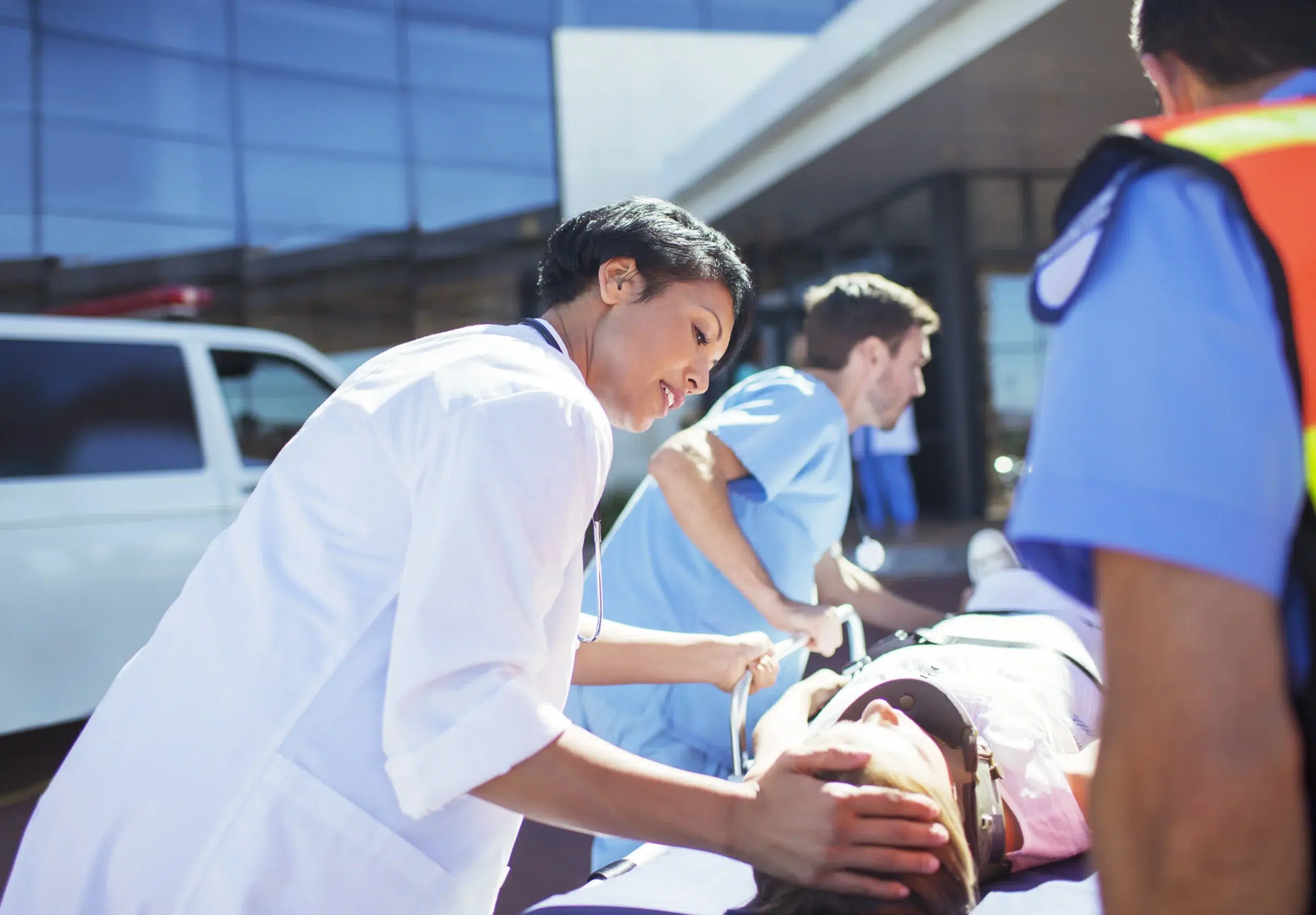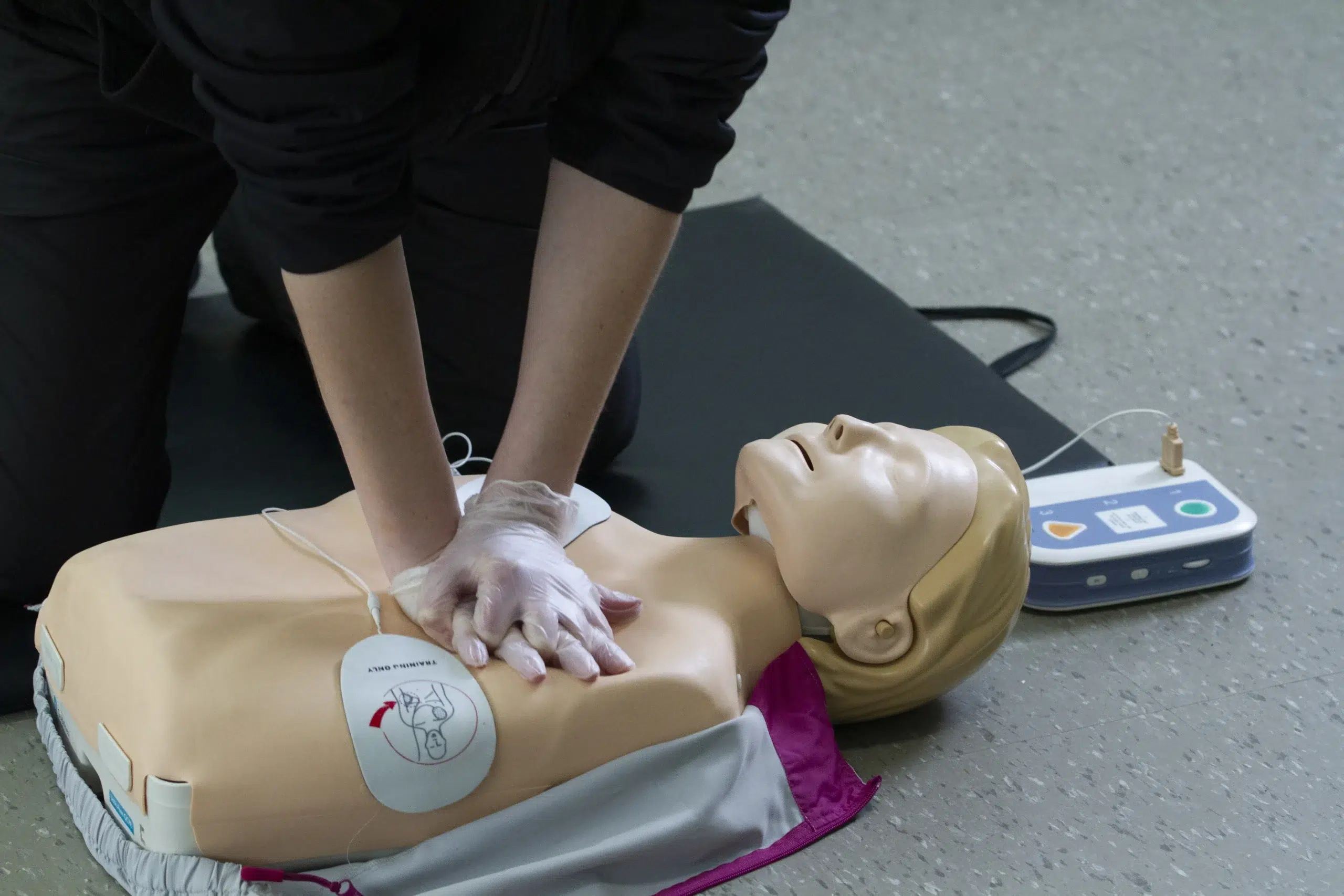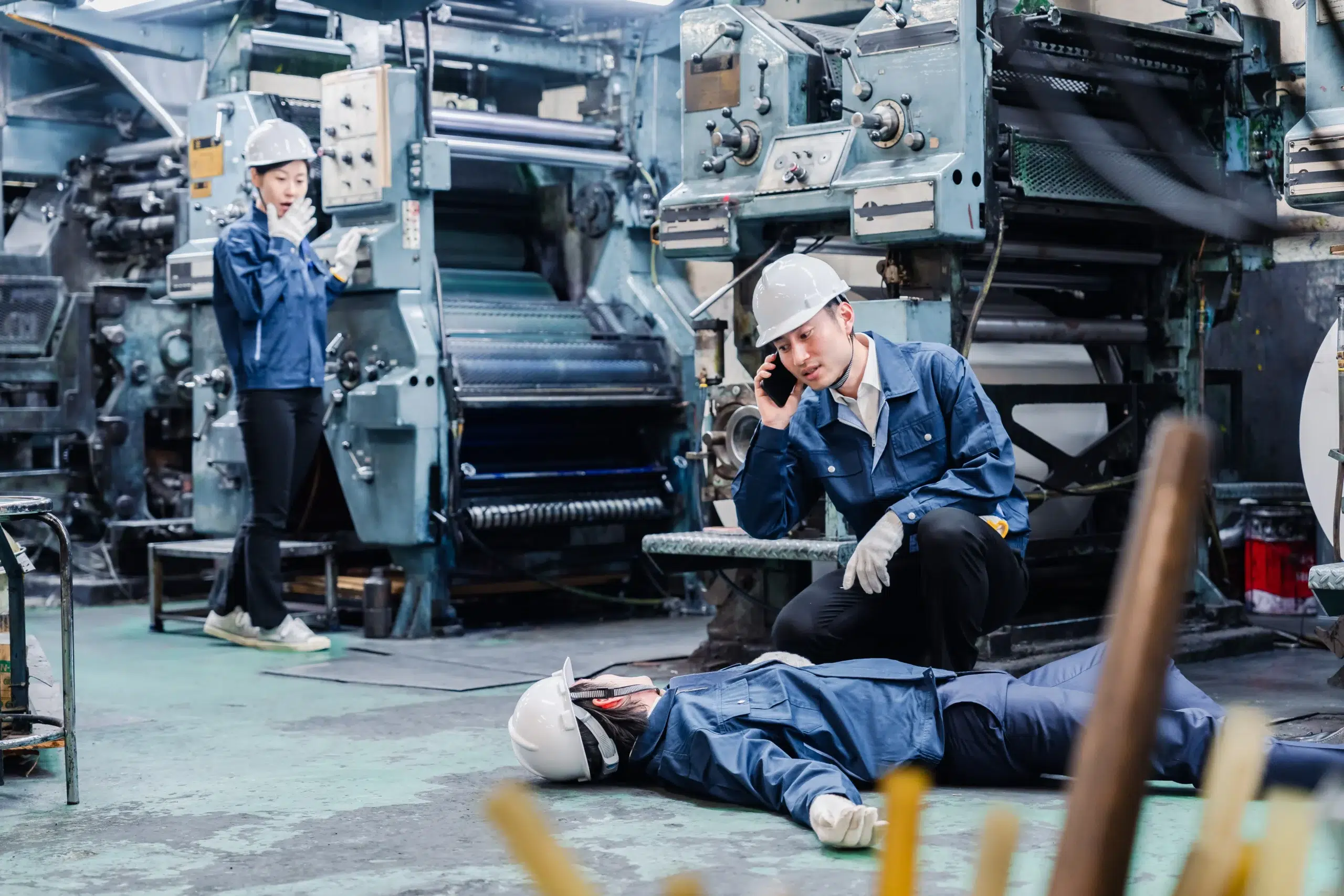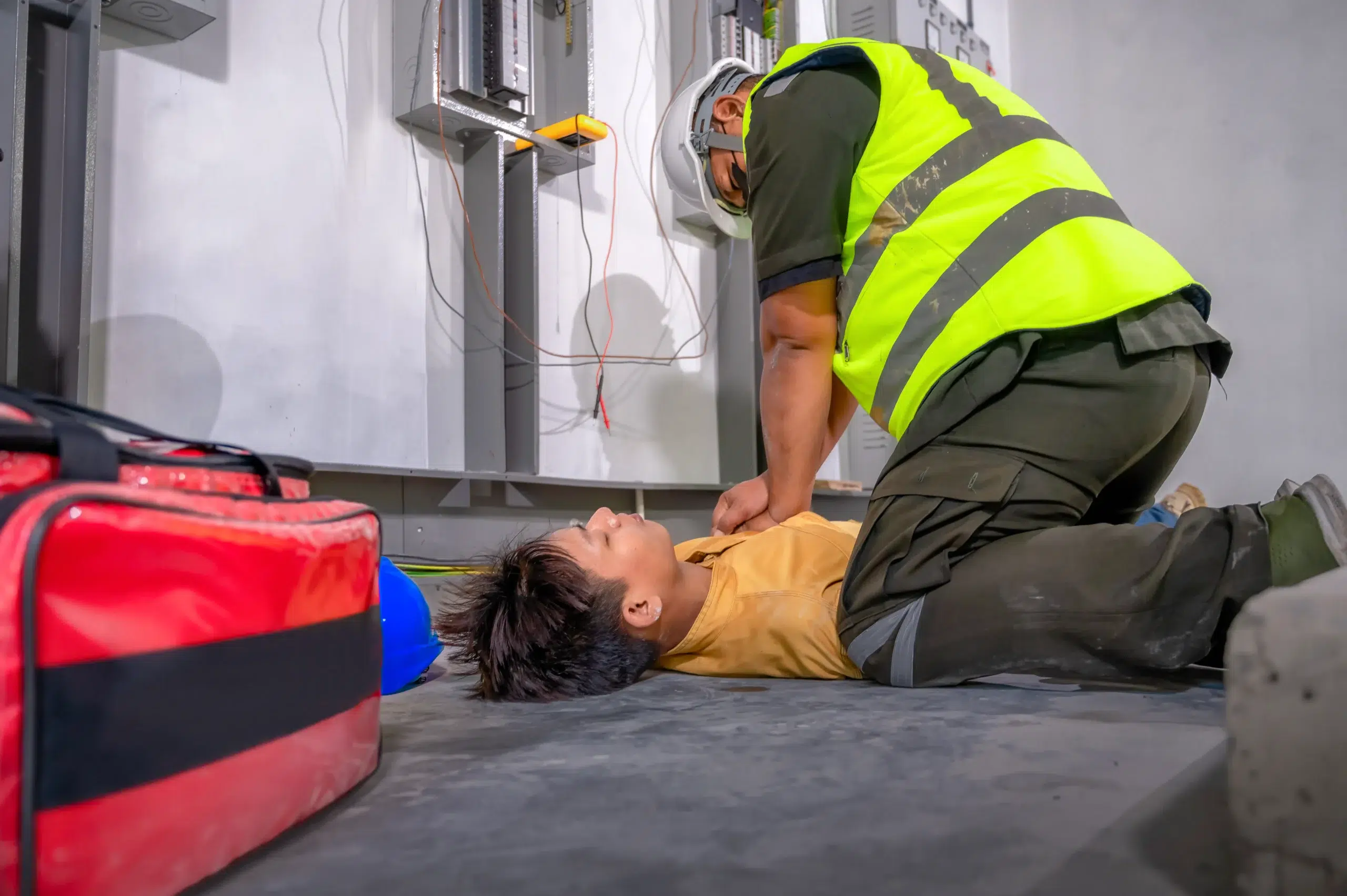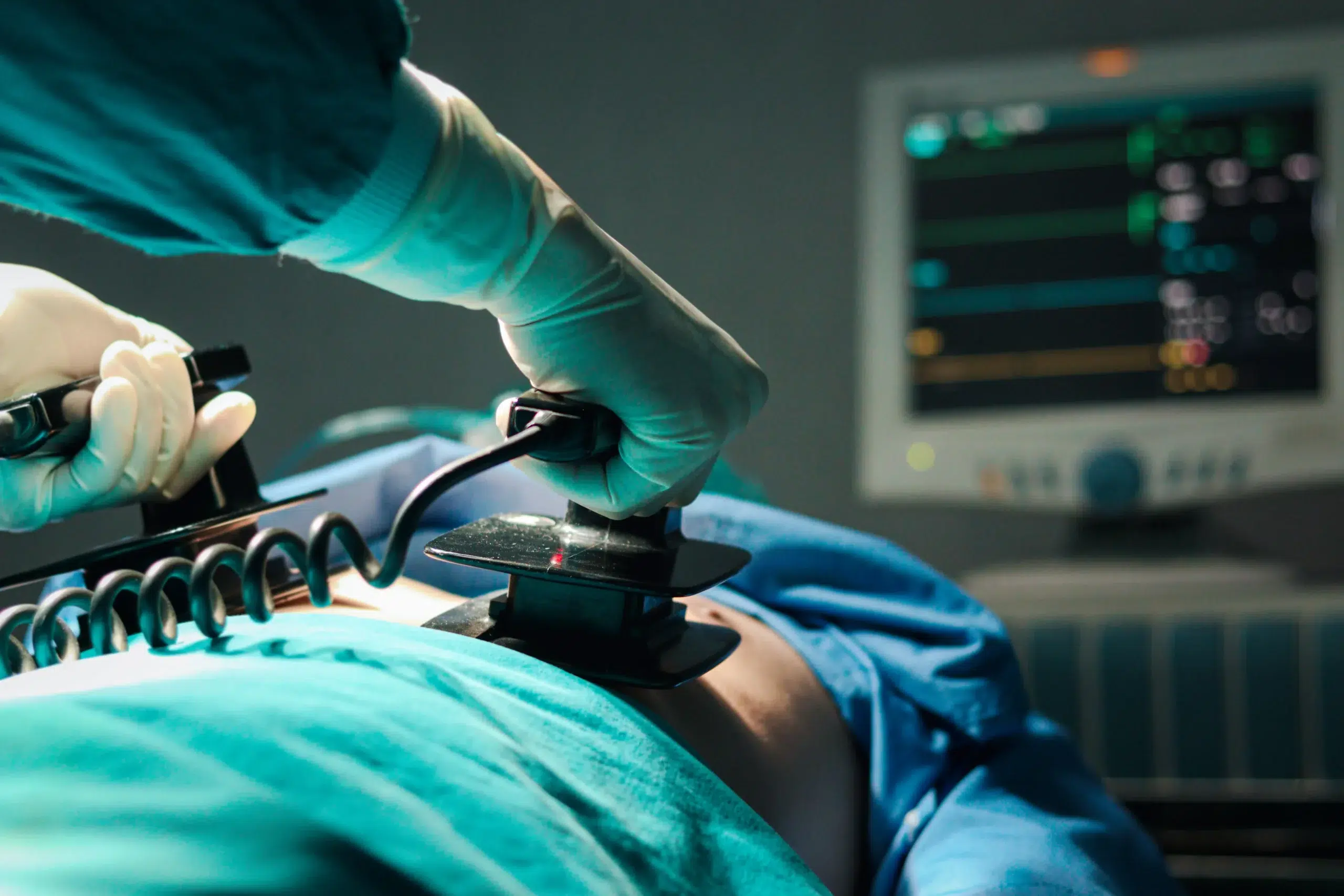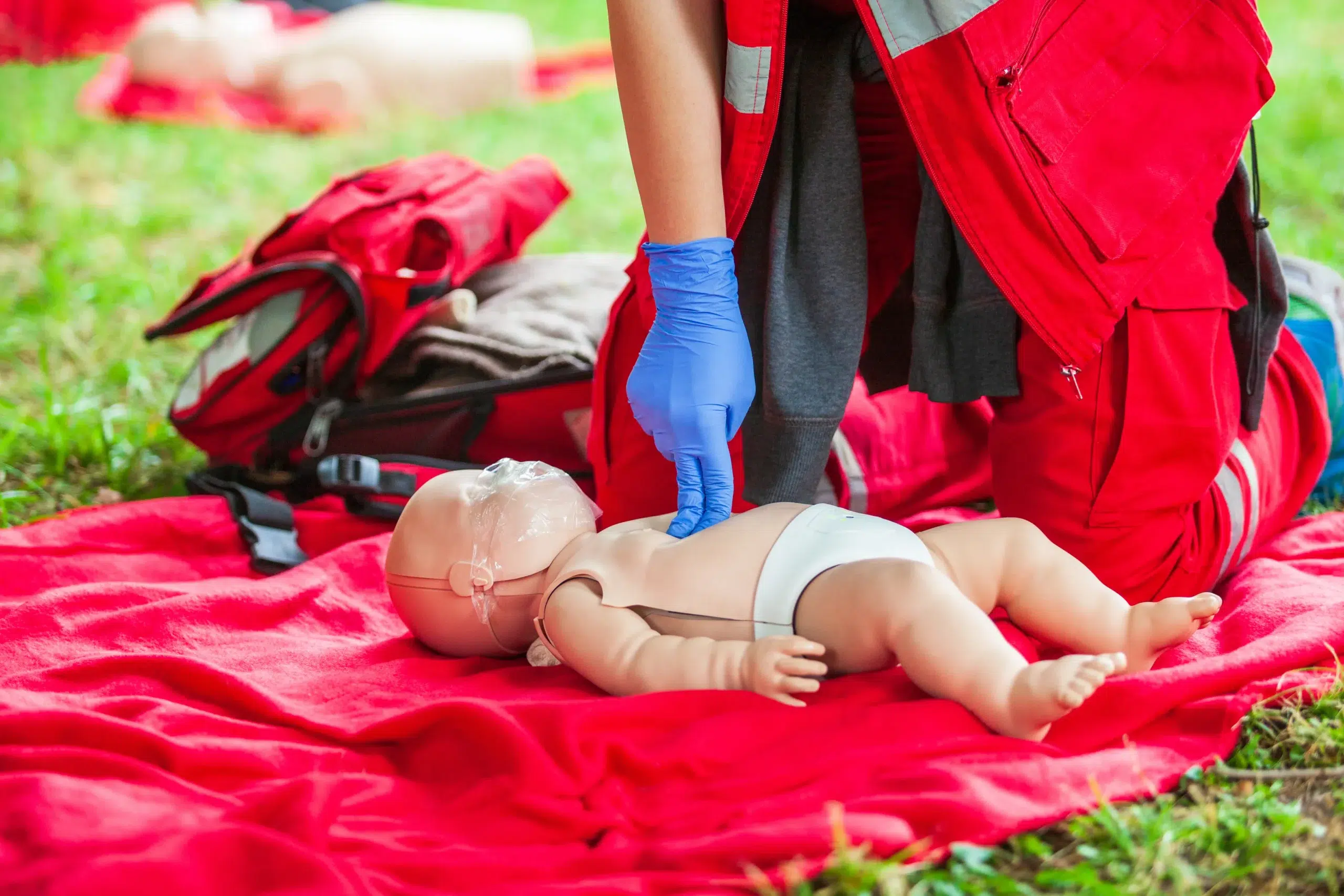In any emergency, seconds can matter. Having first-aid training can give you the confidence and skills to respond effectively until professional help arrives. This guide is your roadmap to finding “first-aid classes near me” that fit your needs and schedule. We’ll explore different training providers, discuss the benefits of local classes, and delve into the various certifications available. You’ll also learn how to prepare for your class, maximize your learning experience, and even discover ways to continue your education in first aid. Empower yourself with the knowledge and skills to make a difference in your community.
Key Takeaways
- Be prepared for anything with first-aid training: Equipping yourself with essential first-aid skills can make a real difference in various emergencies. Find certified courses from reputable providers like the American Red Cross, American Heart Association, or local centers like Danville CPR Classes.
- Choose a course format that fits your lifestyle: From in-person instruction to online learning and blended approaches, select the format that best suits your schedule and learning preferences. Consider factors like cost, location, and the specific certifications offered by each provider.
- Maintain your skills with continuing education: First-aid guidelines and best practices change, so staying current is crucial. Check your certification’s expiration date and find recertification courses to keep your skills sharp and your knowledge up-to-date.
What are First-Aid Classes?
First-aid classes teach you how to respond to emergencies and provide immediate care to someone who’s injured or ill. These classes equip you with practical skills and the confidence to handle various situations, from minor cuts and burns to more serious incidents. Different levels of first-aid training cater to different needs and experience levels.
CPR and AED Training
CPR and AED training are often included in first-aid classes or offered as standalone certifications. CPR (cardiopulmonary resuscitation) teaches you how to perform chest compressions and rescue breaths to keep someone’s blood circulating and oxygen flowing until professional help arrives. AED (automated external defibrillator) training teaches you how to use this device to restore a normal heart rhythm in case of sudden cardiac arrest. These skills are crucial for responding to life-threatening emergencies like heart attacks. For example, Danville CPR Classes offers CPR and First-Aid certification courses.
Basic First Aid
Basic first-aid courses cover essential skills to manage common injuries and illnesses. You’ll learn how to treat cuts, scrapes, burns, sprains, and fractures. You’ll also learn how to recognize and respond to medical emergencies like allergic reactions and choking. The American Red Cross offers a variety of first-aid courses, including online, in-person, and blended learning options.
Advanced First Aid
Advanced first-aid training builds upon basic first-aid knowledge and skills, preparing you for more complex situations. This might include wilderness first aid, which focuses on providing care in remote locations, or advanced techniques for managing severe bleeding or trauma. STS First Aid offers more information on advanced first aid. Advanced first-aid training is often pursued by healthcare professionals, outdoor enthusiasts, and those who work in high-risk environments.
Specialized Courses
Specialized first-aid courses cater to specific industries or needs. For example, childcare providers might take a course on pediatric first aid and CPR, while healthcare professionals might pursue advanced certifications like ACLS (Advanced Cardiovascular Life Support) or PALS (Pediatric Advanced Life Support). Healthline First Aid offers a range of specialized courses. These specialized courses provide targeted training to address the unique challenges of different professions. Danville CPR Classes also offers specialized training, such as the EMSA Child Care Health & Safety course and RQI classes for healthcare professionals.
Find Reputable First-Aid Classes Near You
Finding the right first-aid class involves a bit of research to ensure you’re getting quality instruction. Here’s a practical approach:
Search Online
Start with a simple online search. Type “first-aid classes near me” into your search engine to see local options. The American Red Cross, for example, has a user-friendly website where you can locate classes by zip code and filter by course type. This allows you to quickly compare options and find one that fits your schedule and location.
Verify Certifications and Accreditations
Not all first-aid certifications are created equal. Look for classes certified by nationally recognized organizations like the American Heart Association (AHA). For instance, Healthline First Aid offers AHA-certified courses, ensuring their training meets established standards. Check a training center’s website for information on their certifications or contact them directly. This confirms your certification will be widely accepted.
Evaluate Reviews and Testimonials
Before committing to a class, read reviews from past students. These firsthand accounts can offer valuable insights into the quality of instruction and the overall experience. Healthline First Aid, known for its supportive environment, demonstrates the value of positive student feedback. Also, compare pricing from different providers, like CPR Certification Dallas, to ensure you’re getting a fair price. A little research upfront can save you time and money.
Choose the Right Class Format
Deciding on the right first-aid class format depends on your learning style, schedule, and preferences. Let’s explore in-person, online, and blended learning options to help you make the best choice.
In-Person Training Benefits
In-person training excels with hands-on learning. You’ll work directly with a certified instructor who provides personalized feedback and guidance. This direct interaction is invaluable for mastering essential skills like CPR and using an AED. Practicing in a real-life setting alongside other students builds confidence and reinforces proper techniques. In-person classes often meet OSHA workplace requirements, which is important if you need certification for your job. These certifications are typically valid for two years.
Online Course Flexibility
If you have a busy schedule, online courses offer flexibility. You can learn at your own pace, revisiting material as needed, and fitting the training around your commitments. Online first-aid courses are accessible from anywhere with an internet connection, making them convenient for those with limited travel time or who prefer learning from home. While online courses may not include hands-on skill demonstrations, they provide a solid foundation in first-aid knowledge.
Blended Learning Approaches
Blended learning combines online learning with hands-on practice. You’ll cover the theoretical material online at your own speed and then attend an in-person session to practice your skills and receive expert feedback. This approach allows you to experience the benefits of both formats. Blended learning can be a highly effective way to solidify your understanding and gain practical experience.
Understand First-Aid Training Costs
Before committing to a first-aid course, it’s helpful to understand the costs. Knowing typical price ranges and influencing factors will help you budget effectively and find the best value.
Average Price Ranges
Basic CPR classes typically cost between $40 and $60. BLS CPR and AED training usually falls around $80. Adding First Aid certification to your CPR training usually adds about $20. Group rates often work out cheaper per person. Check with local training centers, like Danville CPR Classes, for pricing and group discounts.
Factors Influencing Costs
Several factors can influence the final cost. The type of course plays a big role. Adult, pediatric, or combined CPR/First Aid courses all have different pricing structures. The certifying organization also matters. The American Heart Association (AHA) and the American Red Cross are two of the most recognized providers, and their courses might have varying price points. Finally, whether you opt for an individual or group class will impact the overall cost.
Potential Discounts and Savings
While cost is a factor, don’t let it be a barrier. Look for ways to make your training more affordable. Some organizations offer free or discounted training in exchange for volunteer work. Also, keep an eye out for special promotions or discounts offered by training centers. Contact Danville CPR Classes—we often have special offers and a low-price guarantee.
Know Your Certifications
Understanding the different types of first-aid certifications, their validity periods, and industry recognition is crucial for choosing the right course. This knowledge helps ensure your certification meets workplace requirements or personal goals.
Types of Certifications Offered
Several organizations offer first-aid certifications, including CPR, AED, and basic life support (BLS) training. The American Red Cross provides a range of courses, from basic first aid to advanced life support. Similarly, the American Heart Association (AHA) offers certifications in CPR, first aid, and AED training through providers like Healthline First Aid. Knowing the specific certifications available, such as those offered by Danville CPR Classes, will help you find a course that aligns with your needs. For example, healthcare providers often require BLS certification, while childcare professionals may need specialized pediatric first aid training like the EMSA Child Care Health & Safety course. Danville CPR Classes also offers RQI classes for healthcare professionals and CPR/First Aid certification.
Validity Periods and Renewal Requirements
First-aid certifications have varying validity periods, often around two years. Understanding the certification’s lifespan is essential for maintaining your qualifications. Regular renewal ensures you stay current with evolving first-aid practices and guidelines. This two-year timeframe allows for updates in techniques and best practices, as highlighted by CPRCertificationNow.com. Check with your certifying organization or employer for specific renewal requirements.
Industry Recognition
The value of your first-aid certification also depends on its industry recognition. Employers often prefer certifications from nationally recognized organizations like the AHA or Red Cross. These certifications demonstrate a standardized level of training and are widely accepted. Choosing a reputable provider ensures your certification holds weight and meets industry standards. A recognized certification can enhance your professional credentials and demonstrate your commitment to safety. For instance, CPR Certification Dallas notes that their certification is accepted by various employers. Danville CPR Classes offers a low price guarantee on its high-quality, recognized courses. If you have questions about our certifications, please contact us.
Prepare for Your First-Aid Class
Getting ready for your first-aid class isn’t just about showing up; it’s about preparing to absorb valuable, potentially life-saving information. Knowing how to administer proper first aid can truly make a difference in emergency situations, so let’s make sure you’re set up for success.
What to Bring
Keep it simple. A notebook and pen are essential for jotting down key points, questions, and reminders. Bring a small bag or backpack to carry your personal belongings. Comfortable clothing and closed-toe shoes are a must, especially for any hands-on practice sessions. Consider a water bottle to stay hydrated throughout the day.
Pre-Course Study Materials
While not always mandatory, reviewing any pre-course materials provided by your instructor can give you a head start. First-aid training often covers a lot of ground, from basic wound care to more complex scenarios. Familiarizing yourself with the terminology and basic concepts beforehand can help you get the most out of your class time. This allows you to focus on practicing skills and asking clarifying questions during the training.
Physical Requirements and Dress Code
First-aid training often involves hands-on practice, including CPR and bandaging techniques. Be prepared for some physical activity. Effective training programs emphasize critical thinking and adapting skills to different situations, so being physically comfortable will help you focus on learning. Dress comfortably and in layers, as room temperatures can vary. Closed-toe shoes are essential for safety during practical exercises. If you have any physical limitations or concerns, inform your instructor beforehand so they can offer appropriate modifications or support.
Get the Most Out of Your Training
First-aid training isn’t just about checking a box; it’s about equipping yourself with the skills to potentially save a life. Here’s how to maximize your learning experience:
Hands-On Practice Techniques
The best way to solidify your first-aid skills is through hands-on practice. Look for courses that emphasize realistic scenarios and simulations. Interactive training with feedback helps you develop muscle memory and critical thinking skills, allowing you to assess situations and adapt your responses effectively. Don’t be afraid to ask questions and actively participate in practice sessions. The more you engage, the more confident you’ll become. This hands-on approach builds a strong foundation for responding effectively under pressure.
Apply Skills in Real-Life Scenarios
While classroom learning is essential, consider how your first-aid knowledge translates to real-world situations. Mentally rehearse different scenarios and how you would respond. Understanding how to administer first aid correctly can be crucial in emergencies. Dispelling common first-aid myths will also strengthen your understanding and preparedness. Consider keeping a well-stocked first-aid kit readily available at home, in your car, and at work, so you’re prepared for unexpected events.
Continuing Education Opportunities
First-aid certification isn’t a one-and-done deal. The field of first aid is constantly evolving, with new techniques and best practices emerging regularly. Most certifications are valid for about two years, so plan to refresh your skills and knowledge through continuing education courses. This ensures your skills remain sharp and aligned with current guidelines. Staying up-to-date demonstrates your commitment to providing effective and safe first-aid care. Check with your certifying organization or local training centers for recertification options and schedules.
First-Aid Training Providers in Danville
Finding the right first-aid training program is essential for being prepared for emergencies. Danville and the surrounding areas offer several options to fit your needs. Here are a few reputable providers:
Danville CPR Classes
Danville CPR Classes offers a comprehensive selection of American Heart Association courses, including CPR, First Aid, and specialized certifications like Basic Life Support (BLS), Advanced Cardiovascular Life Support (ACLS), Pediatric Advanced Life Support (PALS), and Neonatal Resuscitation Program (NRP). They also offer the EMSA Child Care Health & Safety program and RQI classes for healthcare professionals. As a woman-owned business, Danville CPR Classes is committed to providing high-quality training at competitive prices, backed by their low price guarantee. Serving Danville, San Ramon, and Dublin, they make it easy to find convenient first-aid and CPR training near you. For convenient renewal options, check out their RQI courses. Learn more about their offerings on their contact page.
American Red Cross
The American Red Cross is a well-known provider of first-aid and CPR training, offering various courses to suit different learning styles and schedules. With options for online, in-person, and blended learning, you can find a format that works for you. Their programs cover essential skills and techniques for responding effectively to emergencies.
American Heart Association
The American Heart Association (AHA) is another leading provider of CPR, first-aid, and AED training. Their certification courses are widely recognized and respected. The AHA empowers individuals with the knowledge and skills to handle cardiac emergencies and other medical situations.
National Safety Council
The National Safety Council (NSC) provides resources and training programs focused on safety and first-aid best practices. They emphasize staying up-to-date with advancements in first aid, as techniques and guidelines can change.
Local Hospitals and Medical Centers
Many local hospitals and medical centers offer first-aid and CPR training for the community. Check with hospitals in your area, like Stanford Health Care or John Muir Health, for their program offerings. This can be a convenient option for in-person instruction in a healthcare setting. For information on the validity of your first-aid certificate, explore resources like Vigil Training College.
Why Choose Local First-Aid Classes?
Think about it: emergencies happen unexpectedly, and they often occur close to home. Wouldn’t you feel more confident knowing you have the skills to handle a situation within your own community? Local first-aid classes offer distinct advantages that can make a real difference when it matters most.
Community-Specific Knowledge
Local first-aid instructors often tailor their courses to address the specific needs and risks of the community. This means you’ll learn relevant skills applicable to situations you’re more likely to encounter in your area. For example, if you live in an area with specific environmental hazards, like certain poisonous plants or extreme weather conditions, your local class may cover how to handle those particular situations. Basic first-aid training equips individuals in various settings with practical skills they can use during emergencies. This community-focused approach ensures your training is practical and relevant to your daily life.
Network with Local Professionals
Local classes provide the opportunity to connect with healthcare providers and other professionals in your area. These instructors bring real-world experience to the classroom, offering valuable insights and perspectives. Plus, building relationships with local experts can be beneficial down the road. You’ll know who to contact for further guidance or advanced training opportunities. Danville CPR Classes connects you with experienced professionals in your community.
Support Local Training Centers
Choosing a local training center, like Danville CPR Classes, directly supports your community. These centers often reinvest in local resources and initiatives, contributing to the overall safety and well-being of your area. Plus, by training locally, you’re more likely to practice your skills alongside neighbors and colleagues, creating a network of prepared individuals within your community. The emphasis on up-to-date, science-based training ensures students develop the confidence and skills to act in emergencies. Supporting local businesses strengthens your community and fosters a culture of preparedness.
Related Articles
- First Aid Training in Dublin: A Practical Guide – Danville CPR Classes
- CPR & First-Aid Training in Dublin: A Complete Guide – Danville CPR Classes
- First-Aid Training in San Ramon: A Complete Guide – Danville CPR Classes
- CPR Training in Dublin: A Complete Guide – Danville CPR Classes
- Why CPR is Vital in Healthcare and Public Safety
Frequently Asked Questions
What’s the difference between basic and advanced first aid? Basic first aid covers common injuries like cuts, burns, and sprains, while advanced training delves into more complex situations, such as managing severe bleeding or trauma. Advanced training is often geared towards healthcare professionals or those in high-risk environments.
How do I choose the right first-aid class format for me? Consider your learning style and schedule. In-person classes offer hands-on practice and direct interaction with instructors. Online courses provide flexibility for busy schedules. Blended learning combines online study with in-person skill sessions.
Are there ways to save on first-aid training costs? Look for potential discounts like group rates or special promotions offered by training centers. Some organizations may offer free or discounted training in exchange for volunteer work. Compare pricing from different providers to ensure you’re getting a fair price.
How long are first-aid certifications valid, and how do I renew them? Most first-aid certifications are valid for about two years. Check with your certifying organization or employer for specific renewal requirements. Recertification courses are typically required to stay current with the latest guidelines and techniques.
Why should I choose a local first-aid class over an online option? Local classes often tailor their curriculum to the specific needs and risks of your community. They also provide opportunities to network with local healthcare professionals and support local businesses. This can be especially valuable for building connections and accessing further resources.


